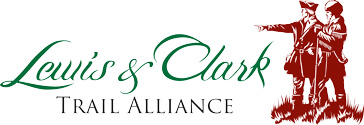Charles Reed

© 2005 C. F. Reed.
Charles F. Reed became an emeritus professor in 1993 after almost three decades on the faculty at Temple University in Philadelphia. In learning about his adopted city, he fell in with some enthusiasts for the story of Lewis and Clark in the years when they were preparing to host an annual meeting of their society, the Lewis and Clark Trail Heritage Foundation, Inc. They were willing to overlook his protests that he was not a historian, on the grounds that his work in psychology, even including some with illusions and non-human creatures, indicated some capacity for delving.
He was educated at Princeton, earned his Ph.D. at the University of California in Berkeley, and has been a member of the faculty at his undergraduate alma mater and the psychiatry department of SUNY in Syracuse, with research and teaching excursions in Santa Cruz, Temple Japan in Tokyo, and Lausanne, Switzerland.
Contributions


Although it would be many years before the entire city had access to pure water, the completion of the Water Works in 1800 helped to reduce the threat of epidemics and provided a foundation for continued urban growth.
Robert Patterson
by Charles F. Reed

Patterson had established a school for establishing longitude from lunar observations. One of his most able students was Andrew Ellicott; one of the most prominent was Meriwether Lewis, for whom he prepared the study manual now known as the Astronomy Notebook.


Rush was the most famous physician in America in 1803, the year Meriwether Lewis, at the behest of Thomas Jefferson, visited him in Philadelphia, where Rush would advise Lewis on how to keep his men healthy.


Like the European charity hospitals, and unlike the Alms House a block away at 10th and Spruce, free medical care was to be provided for the poor, though paying patients were also welcomed. Not admitted were victims of contagious disease and “incurables” except “lunaticks.”


The irony inherent in the juxtaposition of the A.M.E. Church’s prime sanctuary as a symbol of fellowship and hope, with the Walnut Street Gaol (jail) as a place of isolation and despair, would not have been lost on any black person or white abolitionist.


McKean, Pennsylvania governor, was the first pro-Jefferson, anti-Federalist governor in the nation. As Pennsylvania chief justice, he assumed it the right of the court to strike down legislative acts it deemed unconstitutional.


It is not difficult to imagine Jefferson—who probably witnessed the flight—just a few years later contemplating another kind of adventure and recalling those days of excitement and tragedy in Philadelphia.


Lewis may have viewed this bank as a symbol of a victory of Hamilton over Jefferson in the first clash of their respective interpretations of the Constitution.


Important for the history of the scientific accomplishments of the expedition, its first plant specimens were consigned to Barton’s care. Here began the disassembling of the collection, and his promised volume on natural history was never written.


When Meriwether Lewis traveled to Philadelphia in 1802, his guide to the city was Mahlon Dickerson who gave him a survey of people and places well beyond the privilege or opportunity of most Philadelphians of the time.
The New Market
by Charles F. Reed

In 1845 the busy activity of the markets on High Street was matched by a new market on a slight elevation above Dock Creek, between Walnut and South Streets. The neighborhood was called Society Hill, from the Society of Traders that once had an office there.


Dickerson, Philadelphian man-about-town, regarded Lewis as “the most sincere friend I ever had.” Lewis’s visit to Philadelphia in 1802 seems to have been a consequence of meeting Dickerson at Jefferson’s table in Washington.
Christ Church
by Charles F. Reed

One of Bishop White’s parishioners at Christ Church was George Washington. The burial ground contains Benjamin Franklin’s grave and those of seven other signers of the Declaration of Independence.


Lewis’s visit to Philadelphia in 1803 came at a time of diminished status for the State House. The national government had moved to Washington. Old City Hall was no longer occupied by the Supreme Court of the United States and Congress Hall was without Congress.
William Birch
by Charles F. Reed

The Philadelphia buildings Birch portrayed have in turn tended to be those that have been preserved, restored or reconstructed, preserving a period when an epic expansion began its exploratory trickle.


In 1802 George Logan had finished his first year as a United States Senator and had figured in the history of the Expedition by his membership on the three-man committee that approved Jefferson’s request for funds.


The Academy’s monumental collection of scientific specimens includes the Lewis and Clark Herbarium, consisting of most of the botanical specimens the Expedition brought back East.
Experience the Lewis and Clark Trail
The Lewis and Clark Trail Experience—our sister site at lewisandclark.travel—connects the world to people and places on the Lewis and Clark Trail.
Discover More
- The Lewis and Clark Expedition: Day by Day by Gary E. Moulton (University of Nebraska Press, 2018). The story in prose, 14 May 1804–23 September 1806.
- The Lewis and Clark Journals: An American Epic of Discovery (abridged) by Gary E. Moulton (University of Nebraska Press, 2003). Selected journal excerpts, 14 May 1804–23 September 1806.
- The Lewis and Clark Journals. by Gary E. Moulton (University of Nebraska Press, 1983–2001). The complete story in 13 volumes.

